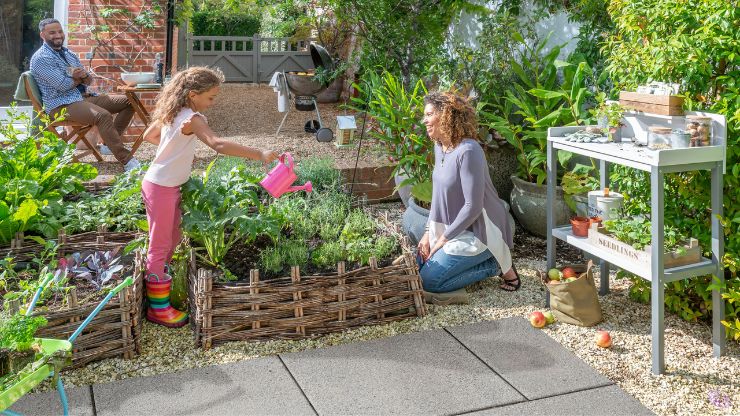Embarking on the journey of cultivating your own kitchen garden is a fulfilling endeavor that brings fresh flavors and vibrant colors to your life. Whether you’re a seasoned gardener or a novice with a green thumb, the prospect of growing your own herbs, vegetables, and fruits is both exciting and rewarding. Imagine stepping into your backyard or onto your balcony to harvest ripe tomatoes, fragrant basil, and crisp lettuce for tonight’s salad. In this article, we’ll explore the top 10 kitchen garden ideas tailored specifically for beginners, guiding you through every step of the process to help you cultivate a thriving garden oasis right at home.
Table of Contents
ToggleKitchen Garden Ideas For Beginners
1. Herb Spiral Garden:
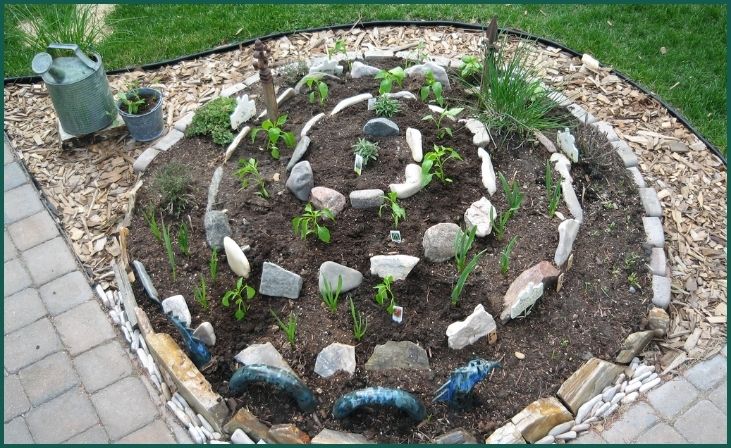
Creating a herb spiral garden is not only visually appealing but also practical for beginners. By constructing a spiral-shaped structure using bricks or stones, you can maximize space while providing various microclimates for different herbs. The top of the spiral receives maximum sunlight, perfect for sun-loving herbs like basil and rosemary, while the bottom remains moist, ideal for moisture-loving herbs like mint and parsley. This design mimics natural ecosystems, allowing you to grow a diverse range of herbs in a small area. Herb spirals are also easy to maintain, as the spiral shape facilitates efficient watering and harvesting. Whether you have a spacious backyard or a compact balcony, a herb spiral garden offers a beautiful and functional solution for cultivating herbs while adding visual interest to your outdoor space.
2. Container Salad Garden:
For beginners with limited space, a container salad garden offers a convenient and portable solution. By planting lettuce, spinach, herbs, and cherry tomatoes in large containers or raised beds, you can enjoy a continuous harvest of fresh salads right at your fingertips. Container gardening allows you to control soil quality, moisture levels, and sunlight exposure, making it ideal for urban dwellers or those with small outdoor spaces. Additionally, containers can be easily moved to optimize growing conditions or accommodate seasonal changes. With proper care and maintenance, a container salad garden provides a bountiful supply of nutritious greens and vegetables throughout the growing season, encouraging healthy eating habits and culinary creativity.
Also Read : 7 Deer-Resistant Flowers For Sun
3. Vertical Herb Wall:
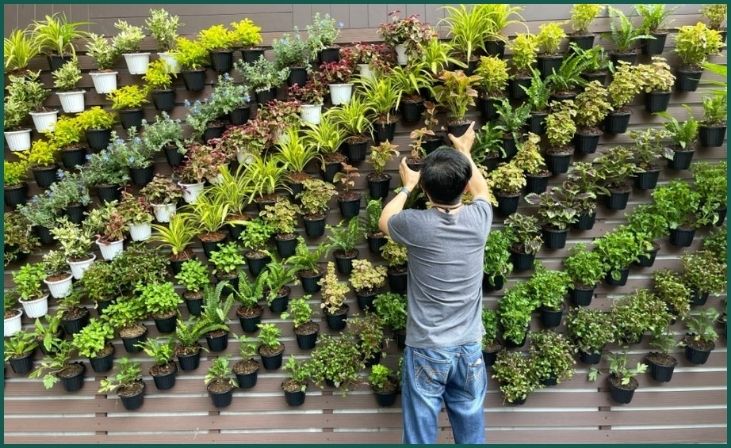
Utilizing vertical space is key for maximizing gardening potential, especially in small urban environments. A vertical herb wall offers an innovative solution by utilizing hanging pockets or repurposed wooden pallets to create a vertical garden. This space-saving technique not only adds greenery to your kitchen or outdoor area but also provides easy access to fresh herbs for cooking. Vertical gardens can be customized to suit your preferences and available space, allowing you to grow a diverse selection of herbs such as basil, thyme, and cilantro. Whether mounted indoors or outdoors, a vertical herb wall serves as a functional and decorative element in your home, bringing nature closer to your everyday life.
4. Kitchen Windowsill Garden:
Transforming your kitchen windowsill into a mini garden is a practical way to incorporate greenery into your living space. By using windowsill planters or small containers, you can grow herbs, microgreens, and small vegetables within arm’s reach while cooking. Kitchen windowsill gardens not only provide fresh ingredients for your culinary creations but also enhance the ambiance of your kitchen with lush greenery. Additionally, growing plants indoors can improve air quality and create a soothing environment, promoting overall well-being. With proper care and maintenance, a kitchen windowsill garden can thrive year-round, providing a constant source of inspiration and nourishment for both body and soul.
5. Square Foot Gardening:
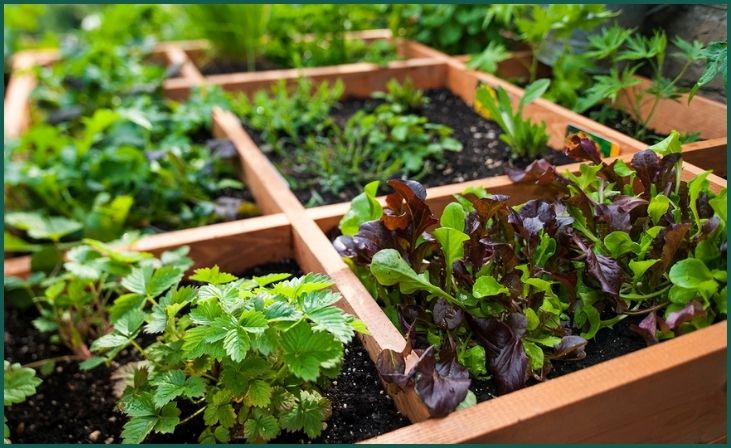
Square foot gardening is a beginner-friendly method that maximizes yields while minimizing space and effort. By dividing raised beds into square-foot sections and densely planting crops according to spacing guidelines, you can optimize space utilization and reduce the need for extensive maintenance. This approach is particularly suitable for small gardens or raised bed setups, allowing you to grow a variety of vegetables and herbs in a compact area. Square foot gardening promotes efficient use of resources such as water, soil, and fertilizers, making it environmentally sustainable and cost-effective. Whether you’re a novice gardener or a seasoned enthusiast, square foot gardening offers a simple yet effective way to create a productive and manageable garden space.
Don't just scroll, subscribe!
BuzzTrail's unique web-stories are the cure for boredom you've been waiting for.
6. Pollinator Garden:
Creating a pollinator garden is not only beneficial for your own garden but also for the environment as a whole. By incorporating a variety of flowering plants alongside your vegetables and herbs, you can attract beneficial pollinators such as bees, butterflies, and hummingbirds. These pollinators play a crucial role in the reproduction of many plants, ensuring abundant harvests and healthy ecosystems. Pollinator gardens promote biodiversity, support native wildlife, and enhance the beauty of your outdoor space with colorful blooms. By selecting a diverse range of plants that bloom at different times throughout the growing season, you can provide continuous food sources for pollinators and enjoy a thriving garden teeming with life.
7. Perennial Edible Garden:
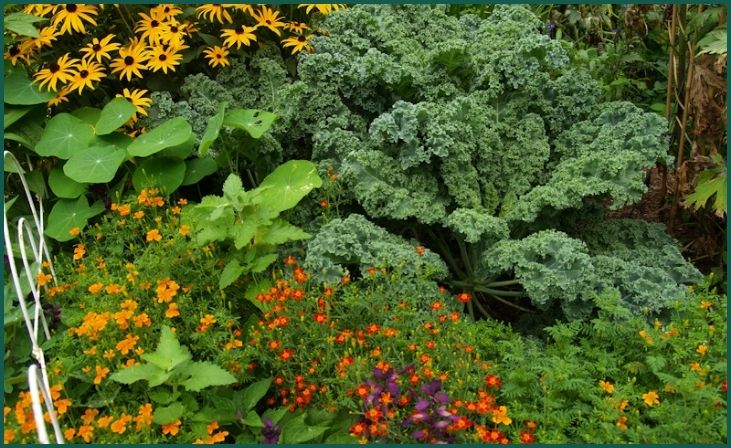
Integrating perennial edible plants into your garden layout offers numerous benefits for beginners. Perennials are plants that live for more than two years, providing year-round harvests with minimal maintenance. By incorporating perennial vegetables, fruits, and herbs such as strawberries, rhubarb, and asparagus, you can enjoy a steady supply of fresh produce without the need for annual replanting. Perennial edible gardens are also environmentally sustainable, as they require less water, fertilizer, and labor compared to annual crops. Additionally, perennial plants contribute to soil health and ecosystem stability, enhancing the overall resilience of your garden. With proper planning and care, a perennial edible garden can provide years of delicious harvests and enjoyment for novice gardeners.
8. Raised Bed Vegetable Garden:
Constructing a raised bed vegetable garden is an excellent option for beginners seeking to create a productive and accessible growing space. Raised beds are elevated planting areas filled with soil, providing better drainage, soil aeration, and weed control compared to traditional garden beds. They also warm up faster in the spring, extending the growing season and allowing for earlier planting. Raised bed gardens are customizable to suit your preferences and available space, making them suitable for gardens of all sizes. Whether you’re growing vegetables, herbs, or flowers, raised beds offer a convenient and efficient way to cultivate a diverse range of plants while minimizing maintenance and maximizing yields.
9. Indoor Hydroponic Garden:
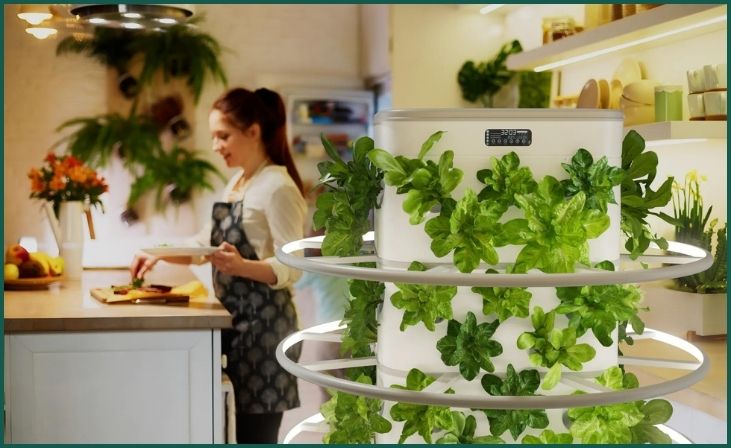
Exploring hydroponic gardening indoors offers an innovative and space-efficient way to grow herbs, leafy greens, and compact vegetables year-round. Hydroponics is a method of growing plants without soil, using nutrient-rich water solutions to deliver essential nutrients directly to the plant roots. By setting up a simple hydroponic system indoors, beginners can enjoy fresh, homegrown produce regardless of outdoor weather conditions or limited garden space. Indoor hydroponic gardens are ideal for urban dwellers, apartment residents, or anyone with limited outdoor space, as they require minimal soil, water, and maintenance. With proper lighting and nutrient management, hydroponic gardening offers a sustainable and efficient solution for growing food indoors, providing a continuous harvest of nutritious greens and vegetables.
Also Read : 8 Essential Tips for Growing Tomato Plants in Pots
10. Heritage Variety Garden:
Dedicating a portion of your garden to growing heritage and heirloom vegetable varieties is a meaningful way to celebrate biodiversity and preserve gardening traditions of the past. Heritage varieties are cultivars that have been passed down through generations, prized for their unique flavors, colors, and adaptability. By growing heritage vegetables such as heirloom tomatoes, ancient grains, and heritage beans, beginners can connect with the rich history of food and agriculture while promoting genetic diversity in their gardens. Heritage variety gardens encourage seed saving, seed sharing, and community engagement, fostering a sense of stewardship and responsibility towards our agricultural heritage. Whether you’re interested in culinary exploration or historical preservation, a heritage variety garden offers endless opportunities for learning, discovery, and connection with the land.
Conclusion
In conclusion, diving into the world of kitchen gardening offers a multitude of benefits, from fostering a deeper connection with nature to providing a sustainable source of fresh produce. By implementing the expert-approved ideas outlined in this article, beginners can confidently embark on their gardening journey, armed with the knowledge and tools needed to succeed. Remember, gardening is a continuous learning experience, so don’t be afraid to experiment, adapt, and grow along with your plants. Whether you’re tending to a small balcony garden or cultivating a sprawling backyard oasis, the joy of nurturing life and witnessing the fruits of your labor is unparalleled. So roll up your sleeves, dig in the dirt, and let your kitchen garden flourish, enriching your culinary adventures and enhancing your well-being along the way.
FAQs
How often should I water my kitchen garden?
How often should I water my kitchen garden?
The frequency of watering depends on various factors such as weather conditions, plant type, and soil moisture levels. Generally, aim to water deeply and consistently, ensuring that the soil remains evenly moist but not waterlogged.
What are the easiest herbs to grow for beginners?
What are the easiest herbs to grow for beginners?
Some of the easiest herbs to grow for beginners include basil, mint, parsley, chives, and thyme. These herbs are relatively low-maintenance and thrive in a variety of growing conditions.

